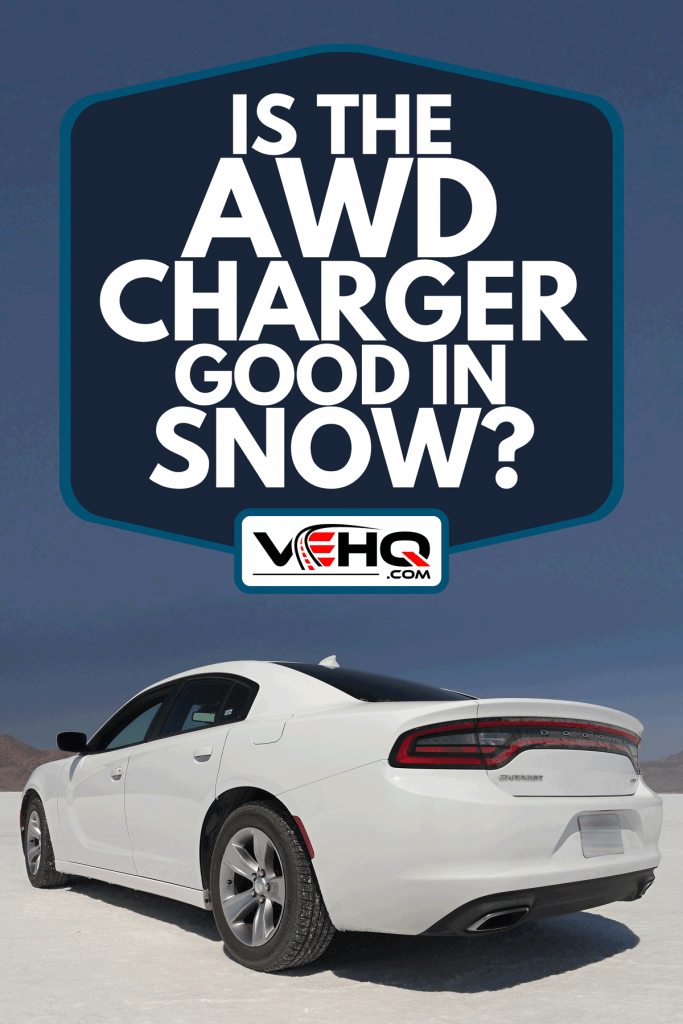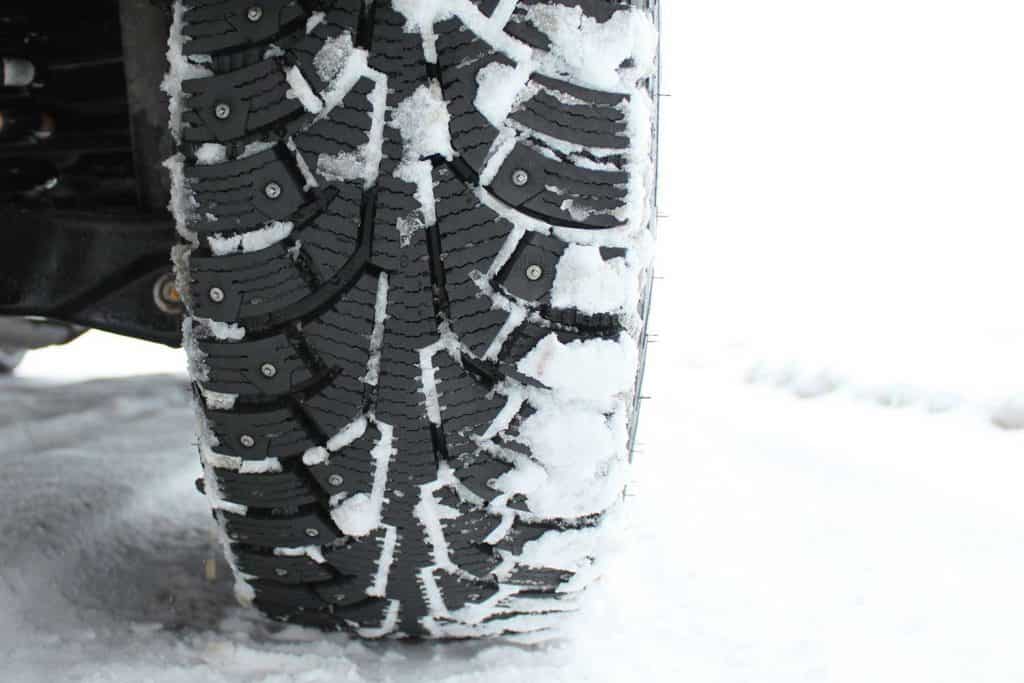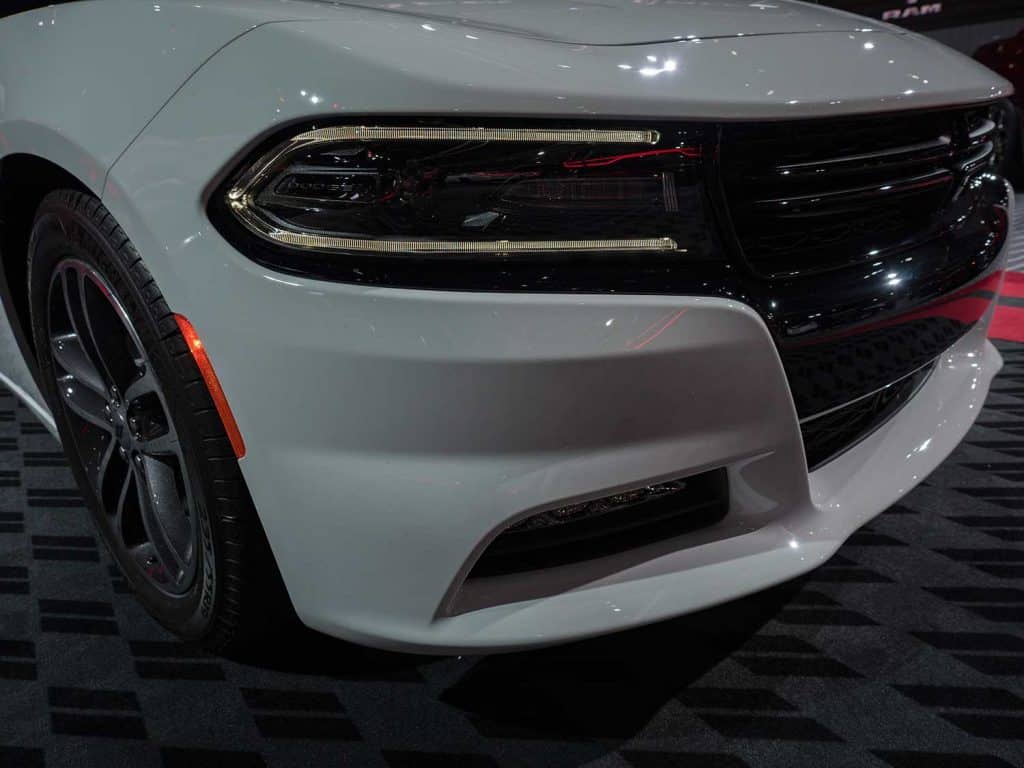Dodge Charger is a well-equipped American muscle sedan. The aggressive styling, roomy and comfortable interior, and capable powertrain are the key factors behinds its success. However, it gets below 0 in winters in most states across the US, and roads start to get slippery with snow and ice. Hence Dodge has considered keeping all-wheel drive optional on the V-6 variants of the Charger. But is the all-wheel-drive Dodge Charge good in the snow?
Yes, the AWD system on the Dodge Charger makes driving on tougher, slippery terrain much safe and easier, let it be a snowy drive uphill or going through the rain at high speeds or mud. The smart all-wheel-drive system is inactive by default on the Charger and only engages in when it needs to. It is done to maximize the vehicle's fuel efficiency while still providing maximum control to the driver.
The car takes input from several key factors to decide whether the all-wheel-drive system should be engaged or not, and it does it very well. When engaged, the car always feels under control, even on slippery snowy tracks, unless you intentionally want to slip the car out.
There you have it, the Dodge Charger can be a great car for the winter, but that's if it is the all-wheel-drive version. This is due to the non-AWD trims being rear-wheel-drive only. These vehicles are great for summer fun cruising down a highway but not ideal on icy roads. Read on as we discuss the Chargers AWD system and the trims that come with an all-weather drivetrain.

What Dodge Chargers Have AWD?
The all-wheel-drive system is only available on the SXT (base) and GT trim of the Dodge Charger. In addition, both of the trims can only have a 3.6L Pentastar V6 engine coupled with 8-speed automatic transmission. Previous models of the Charger did have an option for AWD with a V8.
But in the latest models, AWD can only be equipped with a V6 engine, as there is not enough room for the front differentials on the V8 version of newer models, according to the Dodge engineers. Although the V6 engine does make almost 300 hp and 264 lb. ft of torque which does not make it feel like an underpowered car at all, a V8 engine suits well to a car, which is shown on the market as the American muscle sedan. But none of the V8 trims of the Charger can be equipped with an AWD system currently.
The all-wheel system on the Charger comprises three differentials for operation. It is a rear-bias system, i.e., only the rear two wheels are powered unless the vehicle senses the need for an all-wheel-drive system to engage by multiple environmental or user inputs. For example, the computer takes input from the rain wipers, the ESP, the Transmission, and the outdoor temperature sensor.
Engaging the AWD
After gathering data from the inputs mentioned above, the computer decides whether or not to engage the AWD system. The following situations engage the AWD system on the Dodge challenger.
- If there is an ESP event, that is, if one or both of your rear wheels have spun or loosen traction. The AWD is turned on until there is no tire slip for the last 5 minutes.
- If the rain-sensing windshield wipers automatically turn or are manually turned on. After seven complete wiper cycles, the system triggers the AWD system until the wiper is turned off for the last 5 minutes.
- If the temperature outside is 37' F (3' C) or lower, the AWD system is engaged for 2.25 minutes, after which the temperature is rechecked.
- When ESP (Electronic Stability Program) is turned off by the driver, the AWD system is engaged until the ESP is turned on again.
- If the vehicle is set to sports mode, the AWD system is engaged until sports mode is disengaged.
The all-wheel-drive system, when engaged, will send power to all four wheels of the vehicle. This enables the driver to drive the car quickly on slippery surfaces such as snow with confidence and control. In addition, this intelligent AWD system helps the vehicle consume less gas when on two-wheel mode as by default and turns on the all-wheel-drive system only when required.
Earlier versions of Charger AWD had metallic clanky noise during AWD engagement as they got older, probably due to transfer case issues. But the switch from RWD to AWD on the newer Chargers is flawless, and one can never actually notice precisely when the AWD kicks in.
How Does AWD Work On A Dodge Charger?
The AWD system on the Dodge charger is rear-biased; it sends power to the rear wheels only by default. The all-wheel-drive system is only engaged when the computer onboard senses the need for it or when the user disengages the ESP or switches the car to sports mode.
The car senses the need for AWD by taking input from the ESP for any slips, the temperature sensor to sense cold environment leading to snow and ice, the rain wipers for feeling rain. If it senses any of the conditions mentioned above, the computer onboard engages the clutch on the front axle to engage the all-wheel-drive mode.
Can You Put Snow Tires On Dodge Charger?
Yes, you can put a dedicated set of snow tires on your Dodge charger to make it more capable on snow. Snow or winter tires have a softer rubber and have tiny grooves that bite onto the snow and provide sufficient grip to the car to move safely.
All-season or summer tires get considerably hard under extremely low temperatures, and the vehicle can quickly lose traction on harder turns or braking. If it gets very cold in the winter in your area, then buying a separate set of winter tires for your Charger is the right way to go.

What Year Chargers Are AWD?
The all-wheel-drive system has been available on the Dodge charger as an option from 2007; however, on selected variants only. However, the option of AWD system on given trims has been changing since then. As a result, the following Dodge Charger trims were available in AWD only.
- 2007 – 2008 SXT, R/T
- 2011 – 2014 R/T
- 2012 – 2017 SXT
- 2015 – 2017 SE
- 2018 GT
- 2019 SXT
- 2020 – 2021 SXT, GT

How Do I Know If My Charger Is AWD?
To find if your particular Dodge charger is AWD, look for a "4" badge right next to the "Charger" badge if your vehicle is from 2015 or newer on the back. Suppose you have a 2014 or older Charger look for an "AWD" badge under the "Charger" badge.
If your car doesn't have the AWD badge, you check for your owner's manual. Now, if your car doesn't have an owner's manual, there are other options to find out if your Charge is all-wheel-drive or not.
Call your local Dodge or Chrysler dealership and give them the VIN of your car. They should look up the car and tell you what type of drive train it has. If you bought the car from a dealership, then that dealership in specific is the first one that should be contacted.
If for some reason, the dealership doesn't know or you can't get ahold of anyone who can help, there is one last place you can check. Look underneath the vehicle and look for an axle shaft. An axle shaft is a large bar that runs from the front to the rear axles. If you have an axle shaft, then your vehicle is all-wheel-drive.
In Closing
The AWD system is a wise choice to opt for if you live in a colder region. This option will set you back around $3000 – $3600 depending on the selected trim but can save you from getting stuck out in the cold. They also have a better road grip and stability in slippery scenarios like heavy rainfall or mud. AWD system coupled with winter tires on your Charger, and there you have got a perfect winter companion for yourself.
If you enjoyed this article on if the AWD Charger is good in snow, then you should also read:
Can You Plow Snow With A Toyota Tacoma?
Is The Hyundai Palisade Good In The Snow?
Have you driven a Dodge Charger in the snow? Tell us about it below!
